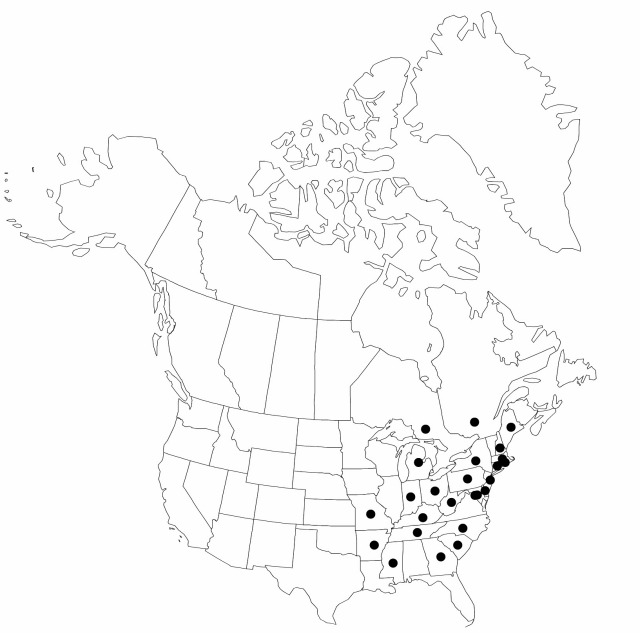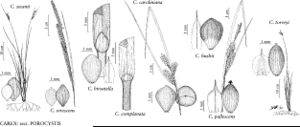Carex virescens
Sp. Pl. 4(1): 251. 1805.
Culms 30–100 cm, sparsely pilose. Leaves: sheaths pilose; ligules longer than wide; blades 2–4 mm wide, pilose. Inflorescences: lateral spikes (18–)20–35 × 2.5–3.5 mm, proximal distant; terminal spike gynecandrous, at least 1/2 of flowers pistillate, 20–35(–40) mm. Pistillate scales ovate-circular, 1.5–2.5(–3.2) × 0.9–1.2 mm, apex of proximal obtuse, with awn to 0.5 mm, apex of distal acute to acuminate, as long as perigynia. Staminate scales ovate, 2.8–4.1 mm, apex obtuse to acuminate. Anthers (1–)1.6–2(–2.8) mm. Perigynia ascending, distinctly 7–12-veined, elliptic, trigonous in cross section, 1.9–2.5 × 1–1.4 mm, densely pilose; beak absent. Achenes 1.5–2 × 0.8–1.1 mm. 2n = 60.
Phenology: Fruiting late spring–early summer.
Habitat: Dry to wet-mesic deciduous forests, banks
Elevation: 0–1000 m
Distribution

Ont., Que., Ark., Conn., Del., D.C., Ga., Ind., Ky., Maine, Md., Mass., Mich., Miss., Mo., N.H., N.J., N.Y., N.C., Ohio, Pa., R.I., S.C., Tenn., Va., W.Va.
Discussion
Selected References
None.
